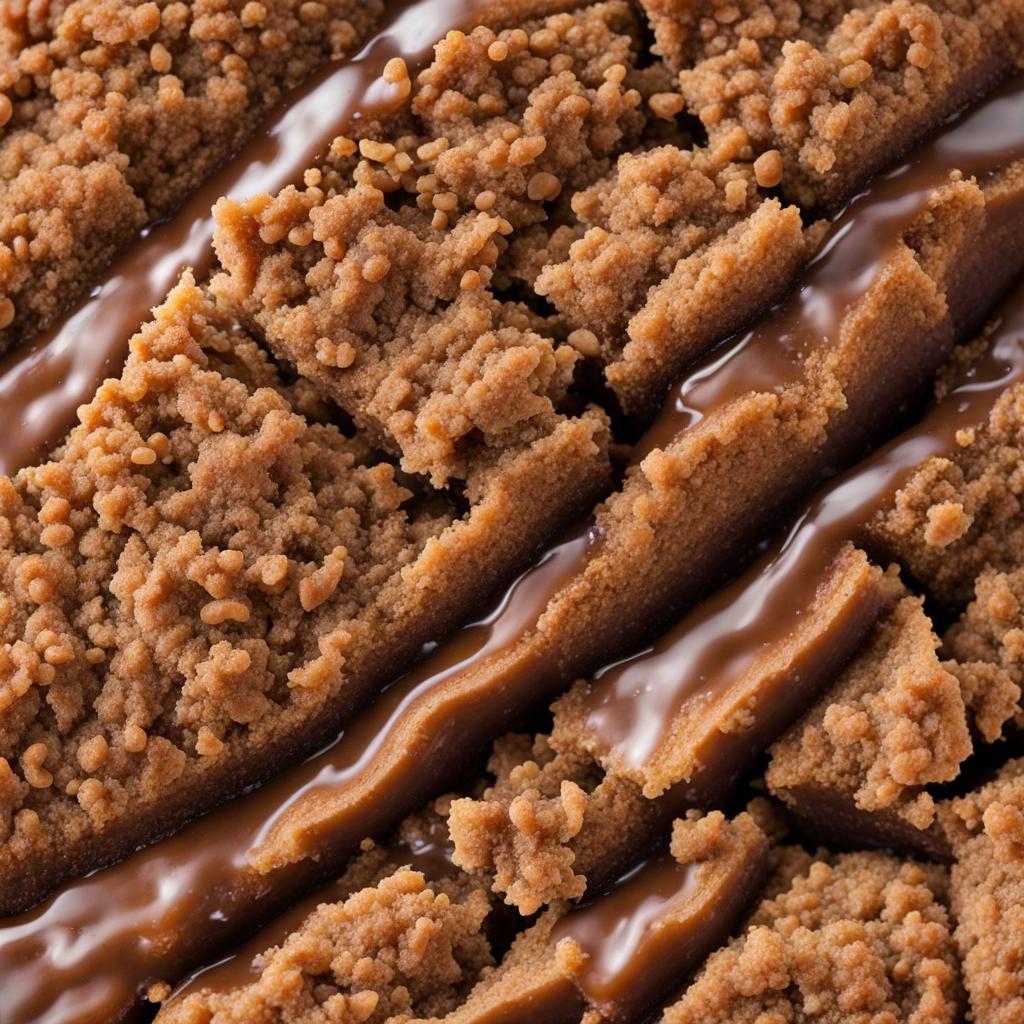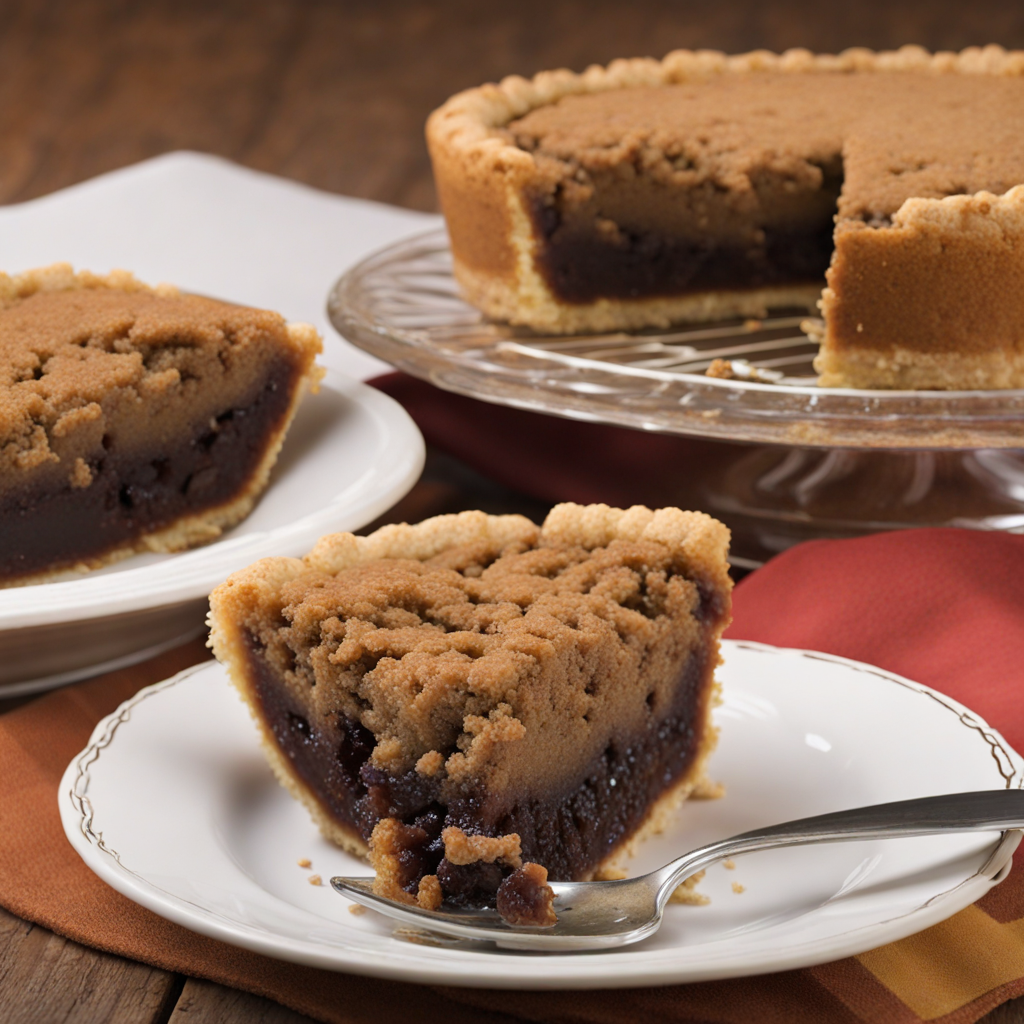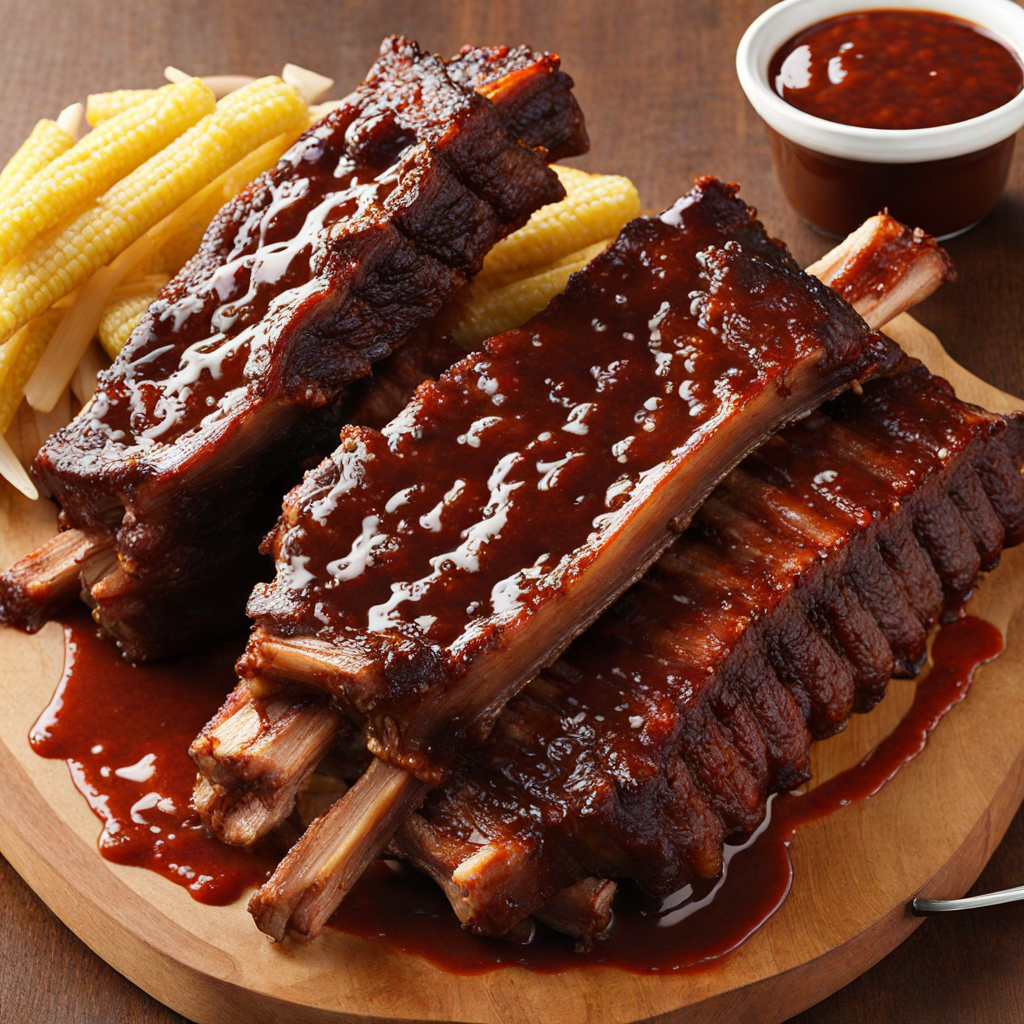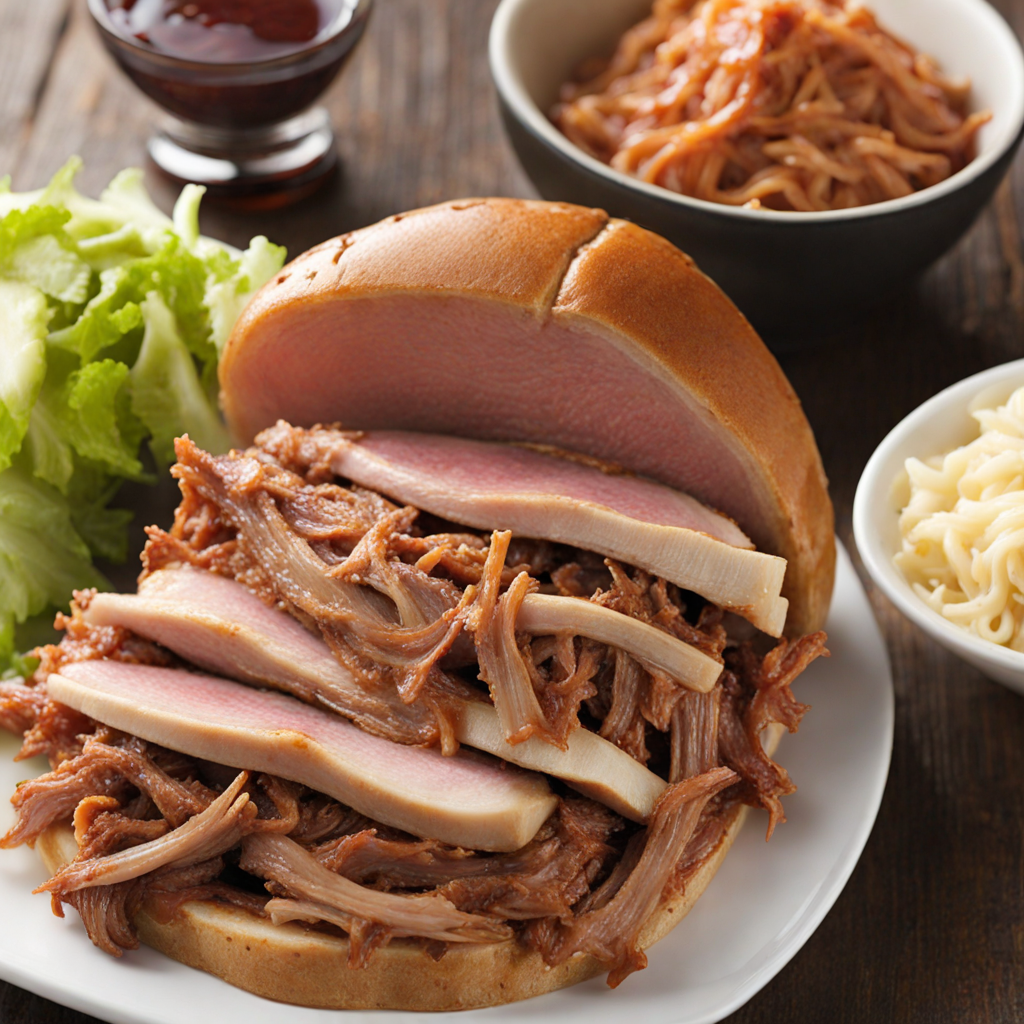Shoofly Pie
Shoofly Pie is a traditional Pennsylvania Dutch dessert that embodies the sweet, hearty flavors of early American cuisine. This pie is primarily made with a simple yet delightful combination of molasses, brown sugar, and a buttery crust. The filling is rich and sticky, often described as a cross between a custard and a cake, creating a unique texture that is both dense and gooey. The deep, caramel-like flavor of molasses is the star of the show, providing a warm, comforting sweetness that is reminiscent of old-fashioned baking traditions. Each bite offers a taste of nostalgia, making it a beloved treat for many, especially in the Mid-Atlantic region of the United States. The pie's unique name has several theories regarding its origin, with one popular explanation suggesting it comes from the phrase "shoe fly, don't bother me," referring to the sweet, sticky filling that would attract flies. Traditionally, Shoofly Pie is categorized into two main styles: "wet" and "dry." The wet version features a syrupy, gooey filling, while the dry type has a crumb topping made from flour, sugar, and butter, adding a delightful crunch that contrasts with the smooth filling beneath. Both versions are equally delicious and showcase the versatility of this dessert, appealing to different palates and preferences. Serving Shoofly Pie is an experience in itself, often enjoyed warm or at room temperature, sometimes accompanied by a dollop of whipped cream or a scoop of vanilla ice cream. It's commonly found at family gatherings, church picnics, and local fairs, where its sweet aroma wafts through the air, beckoning dessert lovers of all ages. For those looking to explore a slice of American culinary history, indulging in Shoofly Pie is a delicious way to savor the rich flavors and traditions that have been passed down through generations, making it a true gem of American baking.
How It Became This Dish
Shoofly Pie: A Sweet Slice of American Heritage Shoofly pie is a delightful dessert that embodies the rich culinary heritage of the United States, particularly within the Pennsylvania Dutch community. With its unique name, intriguing history, and cultural significance, it is more than just a pie; it is a symbol of the region’s agricultural roots and the blending of culinary traditions. #### Origins in Pennsylvania Dutch Country Shoofly pie's origins can be traced back to the 19th century in Pennsylvania Dutch Country, an area settled by German immigrants, known as the Pennsylvania Dutch, who brought with them their foodways and traditions. The term "Dutch" is derived from the word "Deutsch," meaning German, and refers to the descendants of these early settlers. The pie itself is a custard-like dessert made with a filling of molasses, brown sugar, and sometimes corn syrup, layered with a crumb topping made from flour, butter, and sugar. Shoofly pie is believed to have evolved as a way to use molasses, which was a common sweetener before the widespread availability of refined sugar. The pie became popular among the Amish and Mennonite communities, who cherished its hearty, sweet flavor and the simplicity of its ingredients. The name "shoofly" is often thought to originate from the phrase “shoo fly,” which refers to the act of shooing away pesky flies that would be attracted to the sweet pie cooling on windowsills. This charming anecdote encapsulates a rural life where food was made from what was readily available, embodying the spirit of resourcefulness that defined early American cooks. #### Cultural Significance Shoofly pie is more than just a dessert; it represents the cultural identity of the Pennsylvania Dutch. The pie is often served at community gatherings, church functions, and family reunions, making it a staple of social occasions. Its presence at such events highlights the communal aspect of food preparation and consumption, where recipes are passed down through generations, connecting families to their heritage. In addition to its social significance, shoofly pie also reflects the agricultural practices of the region. The primary ingredients—molasses and flour—were products of local farms and markets, showcasing the importance of local agriculture in the diet of the Pennsylvania Dutch. The pie not only nourished the body but also served as a means of celebrating the bountiful harvests of the region. #### Evolution Over Time As time progressed, shoofly pie evolved, adapting to changing tastes and ingredient availability. In the early 20th century, it gained wider recognition beyond the Pennsylvania Dutch community, especially during the Great Depression when many families sought affordable, hearty desserts. The pie was embraced for its affordability, as its simple ingredients could be found in most pantries. During the mid-20th century, shoofly pie began to appear in cookbooks and regional food publications, solidifying its status as a classic American dessert. One notable mention can be found in the 1940s when it was included in the famous "Pennsylvania Dutch Cook Book," which brought the dish to the attention of a broader audience. This exposure helped to popularize shoofly pie, leading to its inclusion in diners and restaurants that aimed to offer authentic regional cuisine. In recent years, shoofly pie has experienced a resurgence in popularity, particularly among food enthusiasts and those interested in traditional American cooking. Artisan bakers and local pie shops have begun to craft their own versions, experimenting with flavors and ingredients while still honoring the traditional recipe. Variations now include chocolate shoofly pie, which incorporates cocoa powder into the crumb topping, and even gluten-free options, reflecting the modern dietary preferences of consumers. #### The Contemporary Scene Today, shoofly pie is often featured at local fairs, farmers' markets, and food festivals, celebrated not only for its flavor but also for its historical significance. The annual Pennsylvania Dutch Festival showcases a variety of traditional foods, with shoofly pie as a highlight. The pie has become emblematic of Pennsylvania Dutch culture, serving as a culinary ambassador for the region. In addition to its appearance in local markets and festivals, shoofly pie has been the subject of numerous articles, blogs, and cooking shows, further cementing its place in American food culture. Chefs and home cooks alike are intrigued by this rustic dessert, often sharing their experiences of making shoofly pie in their kitchens, thus perpetuating the tradition. #### Conclusion Shoofly pie is a testament to the resilience and adaptability of culinary traditions within the United States. From its humble beginnings in the kitchens of Pennsylvania Dutch settlers to its current status as a beloved classic, the pie tells a story of community, resourcefulness, and cultural pride. As it continues to evolve and adapt to modern tastes while remaining true to its roots, shoofly pie will undoubtedly remain a cherished part of American culinary history for generations to come. This sweet, sticky dessert, with its rich molasses flavor and crumbly topping, not only satisfies the palate but also serves as a reminder of the enduring legacy of those who came before us, making it a truly special slice of American heritage.
You may like
Discover local flavors from United States







